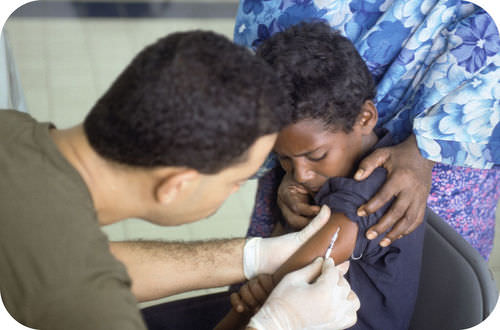7.7: Virus Control
- Page ID
- 12191
\( \newcommand{\vecs}[1]{\overset { \scriptstyle \rightharpoonup} {\mathbf{#1}} } \)
\( \newcommand{\vecd}[1]{\overset{-\!-\!\rightharpoonup}{\vphantom{a}\smash {#1}}} \)
\( \newcommand{\dsum}{\displaystyle\sum\limits} \)
\( \newcommand{\dint}{\displaystyle\int\limits} \)
\( \newcommand{\dlim}{\displaystyle\lim\limits} \)
\( \newcommand{\id}{\mathrm{id}}\) \( \newcommand{\Span}{\mathrm{span}}\)
( \newcommand{\kernel}{\mathrm{null}\,}\) \( \newcommand{\range}{\mathrm{range}\,}\)
\( \newcommand{\RealPart}{\mathrm{Re}}\) \( \newcommand{\ImaginaryPart}{\mathrm{Im}}\)
\( \newcommand{\Argument}{\mathrm{Arg}}\) \( \newcommand{\norm}[1]{\| #1 \|}\)
\( \newcommand{\inner}[2]{\langle #1, #2 \rangle}\)
\( \newcommand{\Span}{\mathrm{span}}\)
\( \newcommand{\id}{\mathrm{id}}\)
\( \newcommand{\Span}{\mathrm{span}}\)
\( \newcommand{\kernel}{\mathrm{null}\,}\)
\( \newcommand{\range}{\mathrm{range}\,}\)
\( \newcommand{\RealPart}{\mathrm{Re}}\)
\( \newcommand{\ImaginaryPart}{\mathrm{Im}}\)
\( \newcommand{\Argument}{\mathrm{Arg}}\)
\( \newcommand{\norm}[1]{\| #1 \|}\)
\( \newcommand{\inner}[2]{\langle #1, #2 \rangle}\)
\( \newcommand{\Span}{\mathrm{span}}\) \( \newcommand{\AA}{\unicode[.8,0]{x212B}}\)
\( \newcommand{\vectorA}[1]{\vec{#1}} % arrow\)
\( \newcommand{\vectorAt}[1]{\vec{\text{#1}}} % arrow\)
\( \newcommand{\vectorB}[1]{\overset { \scriptstyle \rightharpoonup} {\mathbf{#1}} } \)
\( \newcommand{\vectorC}[1]{\textbf{#1}} \)
\( \newcommand{\vectorD}[1]{\overrightarrow{#1}} \)
\( \newcommand{\vectorDt}[1]{\overrightarrow{\text{#1}}} \)
\( \newcommand{\vectE}[1]{\overset{-\!-\!\rightharpoonup}{\vphantom{a}\smash{\mathbf {#1}}}} \)
\( \newcommand{\vecs}[1]{\overset { \scriptstyle \rightharpoonup} {\mathbf{#1}} } \)
\( \newcommand{\vecd}[1]{\overset{-\!-\!\rightharpoonup}{\vphantom{a}\smash {#1}}} \)
\(\newcommand{\avec}{\mathbf a}\) \(\newcommand{\bvec}{\mathbf b}\) \(\newcommand{\cvec}{\mathbf c}\) \(\newcommand{\dvec}{\mathbf d}\) \(\newcommand{\dtil}{\widetilde{\mathbf d}}\) \(\newcommand{\evec}{\mathbf e}\) \(\newcommand{\fvec}{\mathbf f}\) \(\newcommand{\nvec}{\mathbf n}\) \(\newcommand{\pvec}{\mathbf p}\) \(\newcommand{\qvec}{\mathbf q}\) \(\newcommand{\svec}{\mathbf s}\) \(\newcommand{\tvec}{\mathbf t}\) \(\newcommand{\uvec}{\mathbf u}\) \(\newcommand{\vvec}{\mathbf v}\) \(\newcommand{\wvec}{\mathbf w}\) \(\newcommand{\xvec}{\mathbf x}\) \(\newcommand{\yvec}{\mathbf y}\) \(\newcommand{\zvec}{\mathbf z}\) \(\newcommand{\rvec}{\mathbf r}\) \(\newcommand{\mvec}{\mathbf m}\) \(\newcommand{\zerovec}{\mathbf 0}\) \(\newcommand{\onevec}{\mathbf 1}\) \(\newcommand{\real}{\mathbb R}\) \(\newcommand{\twovec}[2]{\left[\begin{array}{r}#1 \\ #2 \end{array}\right]}\) \(\newcommand{\ctwovec}[2]{\left[\begin{array}{c}#1 \\ #2 \end{array}\right]}\) \(\newcommand{\threevec}[3]{\left[\begin{array}{r}#1 \\ #2 \\ #3 \end{array}\right]}\) \(\newcommand{\cthreevec}[3]{\left[\begin{array}{c}#1 \\ #2 \\ #3 \end{array}\right]}\) \(\newcommand{\fourvec}[4]{\left[\begin{array}{r}#1 \\ #2 \\ #3 \\ #4 \end{array}\right]}\) \(\newcommand{\cfourvec}[4]{\left[\begin{array}{c}#1 \\ #2 \\ #3 \\ #4 \end{array}\right]}\) \(\newcommand{\fivevec}[5]{\left[\begin{array}{r}#1 \\ #2 \\ #3 \\ #4 \\ #5 \\ \end{array}\right]}\) \(\newcommand{\cfivevec}[5]{\left[\begin{array}{c}#1 \\ #2 \\ #3 \\ #4 \\ #5 \\ \end{array}\right]}\) \(\newcommand{\mattwo}[4]{\left[\begin{array}{rr}#1 \amp #2 \\ #3 \amp #4 \\ \end{array}\right]}\) \(\newcommand{\laspan}[1]{\text{Span}\{#1\}}\) \(\newcommand{\bcal}{\cal B}\) \(\newcommand{\ccal}{\cal C}\) \(\newcommand{\scal}{\cal S}\) \(\newcommand{\wcal}{\cal W}\) \(\newcommand{\ecal}{\cal E}\) \(\newcommand{\coords}[2]{\left\{#1\right\}_{#2}}\) \(\newcommand{\gray}[1]{\color{gray}{#1}}\) \(\newcommand{\lgray}[1]{\color{lightgray}{#1}}\) \(\newcommand{\rank}{\operatorname{rank}}\) \(\newcommand{\row}{\text{Row}}\) \(\newcommand{\col}{\text{Col}}\) \(\renewcommand{\row}{\text{Row}}\) \(\newcommand{\nul}{\text{Nul}}\) \(\newcommand{\var}{\text{Var}}\) \(\newcommand{\corr}{\text{corr}}\) \(\newcommand{\len}[1]{\left|#1\right|}\) \(\newcommand{\bbar}{\overline{\bvec}}\) \(\newcommand{\bhat}{\widehat{\bvec}}\) \(\newcommand{\bperp}{\bvec^\perp}\) \(\newcommand{\xhat}{\widehat{\xvec}}\) \(\newcommand{\vhat}{\widehat{\vvec}}\) \(\newcommand{\uhat}{\widehat{\uvec}}\) \(\newcommand{\what}{\widehat{\wvec}}\) \(\newcommand{\Sighat}{\widehat{\Sigma}}\) \(\newcommand{\lt}{<}\) \(\newcommand{\gt}{>}\) \(\newcommand{\amp}{&}\) \(\definecolor{fillinmathshade}{gray}{0.9}\)
What's the best part of going to the doctor?
Most people don't like having a shot at the doctor's office. But these are necessary. They protect you from some very dangerous viruses.
Control of Viruses
People have been able to control the spread of viruses even before they knew they existed. In 1717, Mary Montagu, the wife of an English ambassador to the Ottoman Empire, observed local women inoculating their children against smallpox, a contagious viral disease that was often deadly. Inoculation involves introducing a small amount of virus into a person’s body to allow their body to build up immunity to the virus. This early smallpox inoculation involved putting smallpox crusts into the nostril of a healthy person.
Vaccines
Because viruses use the machinery of a host cell to reproduce and stay within them, they are difficult to get rid of without killing the host cell. Vaccines were used to prevent viral infections long before the discovery of viruses. A vaccine is a mixture of antigenic material and other immune stimulants that will produce immunity to a certain pathogen or disease. The term "vaccine" comes from Edward Jenner's use of cowpox (vacca means cow in Latin), to immunize people against smallpox.
The material in the vaccine can either be weakened forms of a living pathogen or virus, dead pathogens (or inactivated viruses), purified material such as viral proteins, or genetically engineered pieces of a pathogen. The material in the vaccine will cause the body to mount an immune response, so the person will develop immunity to the disease. Smallpox was the first disease people tried to prevent by purposely inoculating themselves with other types of infections such as cowpox. Vaccination is an effective way of preventing viral infections. Vaccinations can be given in schools, shown in the Figure below, health clinics, and even at home. Their use has resulted in a dramatic decline in morbidity (illness) and mortality (death) associated with viral infections such as polio, measles, mumps, and rubella. Genetically engineered vaccines are produced through recombinant DNA technology. Most new vaccines are produced with this technology.

A young student receives a vaccine.
A worldwide vaccination campaign by the World Health Organization led to the eradication of smallpox in 1979. Smallpox is a contagious disease unique to humans and is caused by two Variola viruses. The eradication of smallpox was possible because humans are the only carriers of the virus. To this day, smallpox is the only human infectious disease to have been completely eradicated from nature. Scientists are hoping to eradicate polio next.
Antiviral Drugs
While people have been able to prevent certain viral diseases by vaccinations for many hundreds of years, the development of antiviral drugs to treat viral diseases is a relatively recent development. Antiviral drugs are medications used specifically for treating the symptoms of viral infections. The first antiviral drug was interferon, a substance that is naturally produced by certain immune cells when an infection is detected. Over the past twenty years the development of antiretroviral drugs (also known as antiretroviral therapy, or ART) has increased rapidly. This has been driven by the AIDS epidemic.
Like antibiotics, specific antivirals are used for specific viruses. They are relatively harmless to the host, and therefore can be used to treat infections. Most of the antiviral drugs now available are designed to help deal with HIV and herpes viruses. Antivirals are also available for the influenza viruses and the Hepatitis B and C viruses, which can cause liver cancer.
Antiviral drugs are often imitation DNA building blocks which viruses incorporate into their genomes during replication. The life cycle of the virus is then halted because the newly synthesized DNA is inactive. Similar to antibiotics, antivirals are subject to drug resistance as the pathogens evolve to survive exposure to the treatment. HIV evades the immune system by constantly changing the amino acid sequence of the proteins on the surface of the virion. Researchers are now working to extend the range of antivirals to other families of pathogens.
Summary
- Several viral diseases can be treated with antiviral drugs or prevented with vaccines.
Review
- What is a vaccine?
- Describe the relationship between vaccination and immunity.
- What diseases can be controlled with vaccinations? List five.
| Image | Reference | Attributions |
 |
[Figure 1] | Credit: cK-12 Foundation Source: cK-12 Foundation License: CC BY |
 |
[Figure 2] | Credit: PV2 Andrew W. McGalliard Source: commons.wikimedia.org/wiki/File:Somali_boy_receives_a_polio_vaccination.jpg License: Public Domain |

